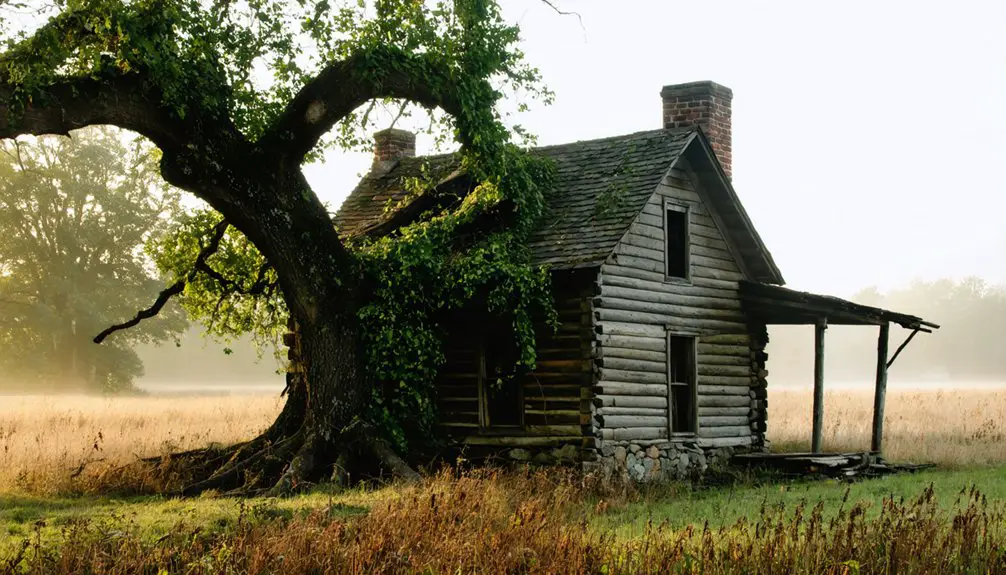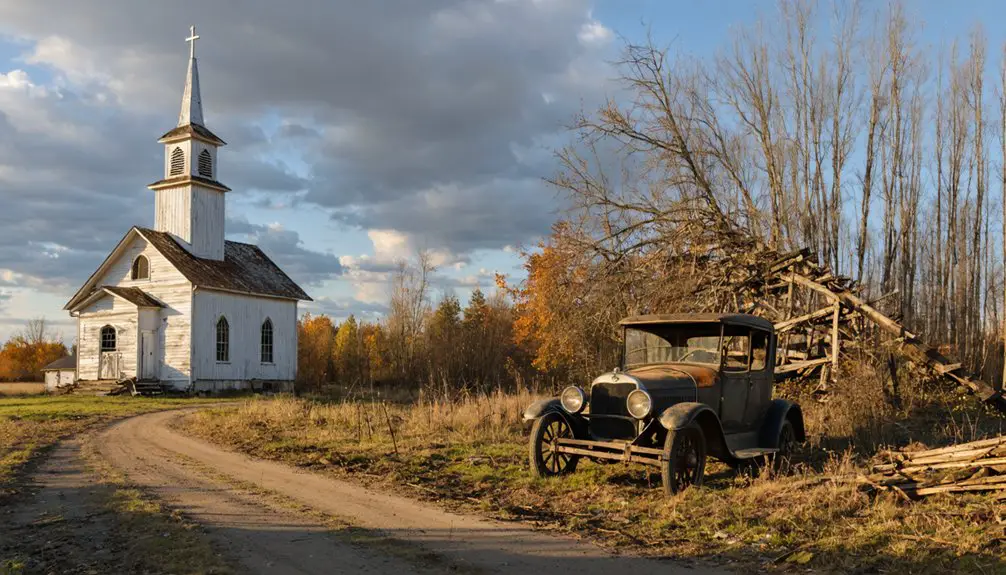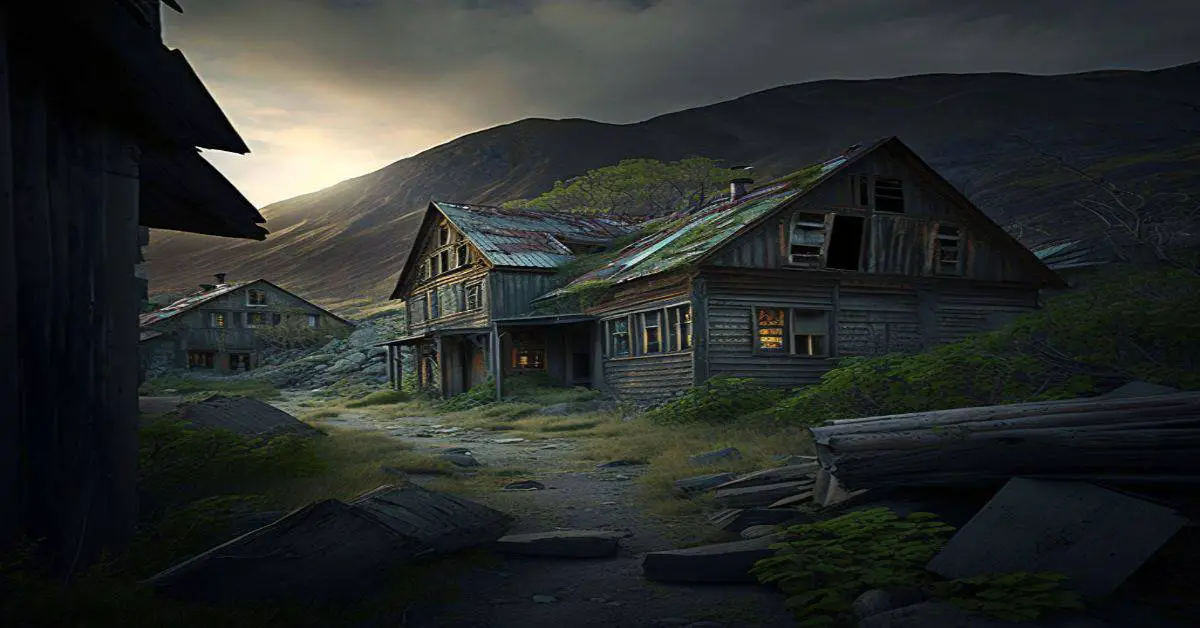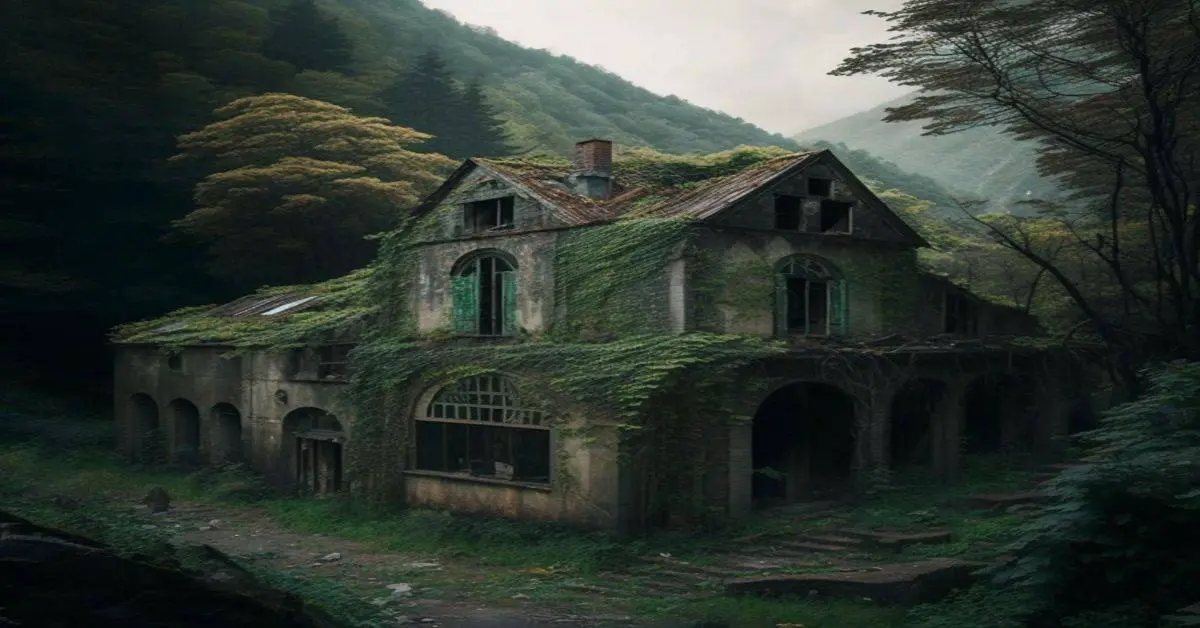You’ll find Volinia, Michigan at the historic intersection of Marcellus Highway and Gard’s Prairie Road in southwestern Michigan’s Volinia Township. Established in 1833 and named after Poland’s Volhynia province, this frontier settlement thrived briefly as a rural hub with its first post office opening in 1834. By 1902, the post office closed as transportation routes bypassed the town. Today, only two historic buildings remain, though nearby Newton Woods preserves the area’s natural legacy.
Key Takeaways
- Volinia Township, established in 1833, transformed from a prosperous crossroads settlement into a ghost town by the early 20th century.
- The town’s decline began when transportation routes bypassed the settlement and the post office closed permanently in 1902.
- Only two historic buildings remain at the intersection of Marcellus Highway and Gard’s Prairie Road, marking the town’s former center.
- The absence of railroad connections and rerouting of major transportation corridors to Pickett’s Corners led to economic stagnation.
- The town’s commercial activity shifted to larger neighboring communities, leaving Volinia as a sparsely populated rural area.
Origins and Early Settlement (1833-1834)

The rural community of Volinia emerged in southwestern Michigan when Cass County officially organized Volinia Township in 1833.
Originally named “Volhynia” after a Polish province, the settlement’s name reflects possible settler heritage from Eastern Europe, though it later evolved to “Volenia” before finally becoming “Volinia.”
The community quickly established itself with a post office in 1834, demonstrating early signs of growth and development.
You’ll find that township organization happened before the formal platting of the village, with early settlers establishing farms and clearing land around what would become the community center. Similar to how the name “Volney” was created by combining letters from two existing names, early Michigan settlements often derived their names through creative combinations.
The Rise of a Rural Hub
Following its township organization in 1833, Volinia quickly emerged as an essential rural hub centered around the crossroads of Marcellus Highway and Gard’s Prairie Road.
Volinia’s strategic location at major crossroads transformed it from newly organized township into vital rural center in 1833.
Like the Potawatomi gardens of earlier times, Edgar J. Gard, a descendant of early Cass pioneers, managed a thriving agricultural enterprise that shaped the region’s development. You’d have found a bustling post office established in 1834, fostering crucial community connections throughout the region. The town’s agricultural heritage flourished, exemplified by prominent landowners like Edgar J. Gard, whose family owned a 373-acre farm on section 20.
While neighboring Charleston served as a stagecoach stop between Kalamazoo and Niles, Volinia’s downtown developed its own commercial identity with stores and shops serving local farmers.
The post office’s strategic relocations, including its move to Pickett’s Corners in 1851 and return to Volinia in 1863, reflected the area’s growing importance as a communication and trade center.
Newton Woods: A Natural Legacy
When you visit Newton Woods today, you’ll find an 80-acre old-growth forest that’s been part of Michigan State University’s research system since Fred Russ’s 1939 land donation.
This living museum showcases centuries-old giants, including Michigan’s largest elm at 150 feet tall and a 24-foot circumference, while serving as an essential research site for understanding native forest ecosystems. The forest includes remarkable beech and maple trees that have dominated the landscape since the glacier’s retreat thousands of years ago. Located in Cass County’s historic landscape, the forest is part of a region containing thirteen prairies, making it ecologically unique in Michigan.
You’re walking through one of southern Michigan’s few surviving virgin forests, designated as a U.S. National Natural Landmark in 1976, where scientists study forest dynamics and ecological patterns that existed before European settlement.
Exploring Nature’s Living Museum
Nestled within Michigan’s lower peninsula, Newton Woods stands as an extraordinary 80-acre tribute to the region’s pre-settlement forests.
As part of the Fred Russ Experimental Forest, you’ll discover one of the last remaining oak-mixed hardwood forests that earned National Natural Landmark status in 1976. The site’s ecological preservation showcases a diverse canopy where oak species once dominated 30-40% of the forest cover. The forest underwent selective thinnings in 1941 to maintain its health and natural conditions. This preservation effort aligns with the Michigan Libraries mission to protect the state’s historical resources.
While exploring this living museum, you’ll witness the impact of recent changes, including the dramatic 2024 white oak die-off that required extensive cleanup efforts.
Despite these challenges, Newton Woods continues its legacy of heritage conservation through managed trails and interpretive programs.
You’re free to experience this rare glimpse into Michigan’s past while hiking or horseback riding through the connecting pathways of Russ Forest County Park.
MSU Research Site Impact
Since its establishment as a research site in 1939, Newton Woods has played an essential role in Michigan State University’s forestry and natural resources programs. The 80-acre old-growth forest’s ecological significance earned it National Natural Landmark status in 1976, making it a crucial living laboratory for understanding forest dynamics. The area’s historical connection to Sanders Lumber Company provides valuable context for studying the region’s forestry development.
- White oak populations served as key indicators of forest health
- Research findings inform statewide forest management practices
- Long-term studies track changes in species composition
- Data contributes to climate impact understanding
You’ll find Newton Woods facing significant challenges in 2024, with nearly all white oaks dying or dead, affecting 40% of the canopy. A recent commercial salvage harvest was conducted by MSU to address the deteriorating forest conditions.
MSU’s intervention through cleanup operations and ongoing research demonstrates the delicate balance between preservation and active management in maintaining this historic forest’s legacy.
Transportation and Economic Changes
Although Volinia initially thrived at the intersection of Marcellus Highway and Gard’s Prairie Road, the town’s fate became increasingly tied to shifting transportation patterns and postal service changes throughout the 1800s.
A small frontier town’s destiny hinged on the changing tides of transportation routes and mail service access.
You’ll find that Volinia’s transport decline began when major routes bypassed the settlement, redirecting commerce and travelers elsewhere. The absence of railroad connections further isolated the community, while nearby towns with rail access flourished.
The town’s economic stagnation intensified as postal services fluctuated – first established in 1834, relocated to Pickett’s Corners in 1851, briefly reinstated in 1863, and permanently closed by 1902.
Without reliable mail service or strategic transport routes, Volinia’s businesses struggled to maintain operations. The lack of industrial diversification, combined with these infrastructure challenges, ultimately pushed the town toward its ghost town destiny.
The Gradual Path to Abandonment

The closure of Volinia’s post office in 1902 marked a critical turning point in the town’s decline, following decades of intermittent postal service disruptions dating back to 1836.
You’ll find that Michigan’s economic downturns throughout the late 19th century, coupled with the loss of postal services, accelerated the exodus of businesses and residents from this once-viable settlement.
As commerce shifted to larger neighboring towns, Volinia’s remaining infrastructure gradually disappeared until only two original buildings survived to mark the ghost town‘s former location.
Economic Shifts Impact Town
During Michigan’s rapid industrialization in the early 20th century, Volinia’s economic foundations began to crumble as copper and timber prices collapsed across the state.
You’ll find that this economic decline triggered a chain reaction throughout the community, transforming a once-thriving agricultural hub into a shell of its former self.
Despite attempts at community resilience, Volinia faced mounting challenges:
- Loss of young workers to urban centers with diverse job markets
- Closure of essential businesses including general stores and gristmills
- Rerouting of transportation corridors to Pickett’s Corners
- Shift from commercial center to tourism destination after Newton Woods’ 1976 designation
The town’s isolation from major trade routes and dwindling population ultimately sealed its fate, as remaining residents witnessed their vibrant community transform into a historical remnant of Michigan’s resource-driven past.
Post Office Closure Effects
Since Volinia’s first post office opened its doors in 1834, postal services played an essential role in the town’s connectivity and commerce.
You’ll find a turbulent postal legacy marked by multiple closures and reopenings, including a brief relocation to Pickett’s Corners in 1851. The final closure in October 1902 accelerated Volinia’s path to abandonment.
The loss of postal services created a rippling effect of community disconnection. Without a local post office, businesses couldn’t effectively manage mail orders, and residents had to travel to neighboring towns for basic postal needs.
You can trace the town’s decline through its shifting population patterns, as people gradually moved closer to active post offices in Nicholsville and other nearby settlements.
Today, only two buildings remain where a once-bustling downtown stood.
What Remains Today
Modern-day visitors to Volinia will find just two historic buildings standing at the once-bustling intersection of Marcellus Highway and Gard’s Prairie Road.
These remaining structures serve as silent sentinels to a vanished era when the town thrived with multiple stores and a functioning postal service that operated from 1834 to 1902.
Today, you’ll discover:
- No complete commercial blocks remain intact
- No active postal facilities exist
- No formal visitor center or interpretive signage
- No concentrated population center
While the area retains a few scattered residents across the township, the historic village site has transformed into rural land.
The ghost town now primarily attracts photographers, history enthusiasts, and road-trippers seeking a glimpse into Michigan’s past.
Nearby Newton Woods, designated as a National Natural Landmark in 1976, offers visitors a preserved natural attraction contrasting with Volinia’s abandoned state.
Historical Significance in Michigan’s Story
The story of Volinia weaves deeply into Michigan’s early settlement patterns, reflecting broader themes in the state’s development.
You’ll find its cultural heritage mirroring countless other rural communities that sprouted at crucial crossroads during the 1830s, particularly where Marcellus Highway meets Gard’s Prairie Road.
When you examine Volinia’s trajectory from 1833 to 1902, you’ll discover how its post office’s repeated openings and closures tell a familiar tale of Michigan’s economic ups and downs.
Its proximity to Newton Woods, now a National Natural Landmark, and its role in early agricultural development showcase the delicate balance between settlement and nature.
The community dynamics of Volinia, from its evolution through “Volhynia” to its current state, exemplify Michigan’s transformation from frontier to established territory.
Frequently Asked Questions
Are There Any Ghost Stories or Paranormal Activities Reported in Volinia?
With just two buildings remaining, you won’t find documented ghost sightings or paranormal investigations in Volinia. Unlike nearby Charleston’s haunted 1879 murder site, this ghost town’s quiet decline hasn’t spawned supernatural tales.
What Happened to the Families Who Originally Lived in Volinia?
You’ll find Volinia’s family legacy scattered across Michigan after 1902, when families gradually relocated to nearby towns seeking better opportunities once postal services closed and economic prospects diminished.
Can Visitors Legally Explore the Remaining Buildings in Volinia?
Like footprints in untouched snow, you’re walking a delicate line – there’s no explicit permission to enter these buildings. You’ll want to avoid exploration since legal implications suggest trespassing on private property.
Were There Any Notable Crimes or Mysteries Associated With Volinia?
You won’t find documented unsolved mysteries or historical crimes specific to Volinia. Unlike other Michigan ghost towns, records suggest the town’s decline was driven by economic factors rather than criminal activity.
Does Anyone Maintain the Old Cemetery Grounds in Volinia?
Like many forgotten sanctuaries, you won’t find formal cemetery upkeep at the old grounds. No burial records confirm regular maintenance, though occasional locals might clear brush from the 19th-century plots.
References
- https://99wfmk.com/voliniamichigan/
- https://kids.kiddle.co/List_of_ghost_towns_in_Michigan
- https://99wfmk.com/charleston-michigan/
- https://www.youtube.com/watch?v=7-vjuqiGWJU
- https://www.leaderpub.com/2007/06/20/paper-towns-litter-the-rural-landscape/
- https://99wfmk.com/volneymichigan/
- https://www.youtube.com/watch?v=1KeSmsO68H8
- https://www.smithsonianmag.com/history/once-a-year-this-19th-century-michigan-ghost-town-comes-to-life-180982695/
- https://en.wikipedia.org/wiki/Volinia_Township
- https://www.migenweb.org/cass/biographies/cassixg.htm


